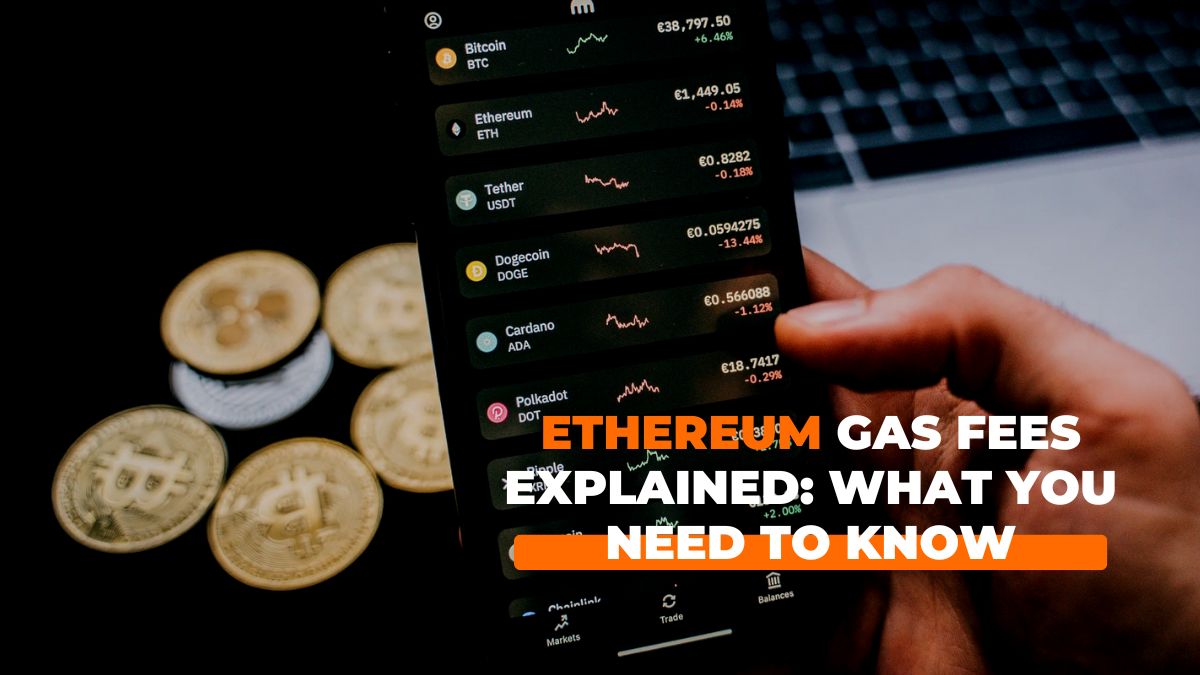
Gas fees are a fundamental aspect of the Ethereum network, playing a crucial role in facilitating transactions and smart contract execution. Understanding how gas fees work is essential for anyone interacting with Ethereum, whether they’re sending Ether (ETH) to another user or executing a smart contract on the blockchain. Ethereum Code can help you to get access to premium investment education where you can learn in depth about Ethereum and investing in it.
How Gas Fees Work
Gas is the unit used to measure the computational effort required to execute operations or transactions on the Ethereum network. Each operation consumes a certain amount of gas, and the total gas fee for a transaction is calculated based on the gas consumed and the gas price.
The gas price is the amount of Ether (ETH) a user is willing to pay per unit of gas. Miners prioritize transactions with higher gas prices because they provide greater financial incentives. Therefore, setting an appropriate gas price is crucial for ensuring timely transaction confirmation.
Calculating Gas Fees
To calculate the total gas fee for a transaction, you multiply the gas consumed by the gas price. The formula is simple:
Total Gas Fee = Gas Price (in ETH) × Gas Used
For example, if the gas price is 20 Gwei (0.00000002 ETH) and the gas consumed by a transaction is 50,000, the total gas fee would be:
Total Gas Fee = 0.00000002 ETH × 50,000 = 0.001 ETH
Understanding Gas Price and Gas Limit
Gas price and gas limit are two parameters that users can specify when sending a transaction on the Ethereum network. The gas price determines how much Ether a user is willing to pay per unit of gas, while the gas limit sets the maximum amount of gas that can be consumed by the transaction.
Setting the gas price too low may result in the transaction being stuck in the mempool for an extended period, especially during times of high network congestion. On the other hand, setting the gas price too high can lead to unnecessarily high transaction fees.
Similarly, setting the gas limit too low may cause out-of-gas errors, halting the execution of the transaction prematurely. Conversely, setting the gas limit too high may result in wasted gas and higher fees than necessary.
Tips for Managing Gas Fees
To optimize gas fees, users can employ various strategies:
- Monitor Network Congestion: Keep an eye on network congestion levels and adjust gas prices accordingly. During times of high congestion, consider increasing the gas price to ensure timely confirmation of transactions.
- Use Gas Fee Estimators: Several online tools and wallets provide gas fee estimators that analyze network conditions and recommend appropriate gas prices for transactions.
- Batch Transactions: Whenever possible, batch multiple transactions into a single transaction to reduce overall gas fees. This is especially useful for interacting with decentralized exchanges or conducting multiple token transfers.
- Optimize Smart Contracts: When deploying smart contracts, optimize the code to minimize gas consumption. This can significantly reduce transaction costs, especially for complex contracts.
- Consider Off-Peak Hours: Try to execute transactions during off-peak hours when network congestion is lower. This can result in lower gas prices and faster transaction confirmation times.
Recent Trends in Gas Fees
Gas fees on the Ethereum network have been subject to significant fluctuations, largely driven by changes in network activity and market dynamics. During periods of high demand, such as the surge in DeFi activity or the launch of popular NFT collections, gas fees can skyrocket, making transactions prohibitively expensive for some users.
The introduction of Ethereum Improvement Proposal (EIP) 1559 aimed to address some of the issues related to gas fees by introducing a base fee mechanism and burning a portion of transaction fees. While EIP-1559 has been implemented successfully, it has not entirely eliminated gas fee volatility.
Future of Gas Fees in Ethereum
The future of gas fees in Ethereum is closely tied to ongoing protocol upgrades and developments. Ethereum 2.0, the long-awaited upgrade to Ethereum’s consensus mechanism, aims to transition the network from proof-of-work to proof-of-stake, which could significantly reduce energy consumption and improve scalability.
Additionally, layer 2 solutions such as rollups and sidechains offer promising avenues for scaling Ethereum and reducing transaction costs. By moving some transaction processing off-chain and settling the results on the Ethereum mainnet, layer 2 solutions can increase throughput and lower gas fees.
Conclusion
In conclusion, understanding Ethereum gas fees is essential for anyone interacting with the Ethereum network. By grasping the concepts of gas, gas price, and gas limit, users can optimize their transactions to minimize fees and ensure timely confirmation. While gas fees have been a source of frustration for many Ethereum users, ongoing protocol upgrades and innovations offer hope for a more scalable and cost-effective network in the future.